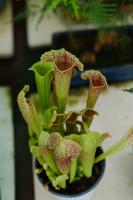Introduction
Water potential is a crucial concept in plant biology, as it determines the movement of water within and outside plant cells. Water potential is defined as the potential energy of water per unit volume relative to pure water. In plant cells, water potential is affected by various factors such as solute concentration, pressure, and temperature. In this article, we will explore different methods of determining water potential for plant cells.
Measurement of Solutes
One of the ways to determine water potential for plant cells is by measuring the concentration of solutes. This can be done by utilizing either the pressure probe or freezing point method. The pressure probe method involves introducing known concentrations of solutes into a solution and measuring the corresponding pressure. The pressure is then used to calculate the water potential using the following formula:
Water potential = pressure / solute potential
On the other hand, the freezing point method involves measuring the freezing point of a solution containing known concentrations of solutes. The freezing point is then used to calculate the water potential using the following formula:
Water potential = (Ψf/Ψo) x Kf
where Ψf is the freezing point depression, Ψo is the standard pressure, and Kf is the freezing point depression constant.
Turgor Pressure
The turgor pressure, which refers to the pressure exerted by the cell wall against the cell contents, is another factor that affects water potential for plant cells. To determine the turgor pressure of a plant cell, one can use the pressure probe method mentioned earlier. By introducing a known concentration of solutes into a cell, the pressure exerted by the cell contents against the cell wall can be measured. The turgor pressure can then be calculated using the following formula:
Turgor pressure = pressure - osmotic pressure
where osmotic pressure is the pressure exerted by the solutes on the cell membrane.
Osmotic Potential
Osmotic potential is the potential energy of a solution resulting from the concentration of solutes relative to pure water. It is the primary factor that determines the movement of water in and out of plant cells. To determine the osmotic potential of a solution, one can use the pressure probe method or the vapor pressure method. The vapor pressure method involves measuring the pressure exerted by a solution containing known concentrations of solutes above a pure water surface. The difference in pressure between the solution and pure water surface is used to calculate the osmotic potential using the following formula:
Osmotic potential = pressure solution - pressure pure water
Conclusion
In conclusion, water potential is a critical concept in understanding plant biology and the movement of water within and outside plant cells. There are different methods of determining water potential for plant cells, including measuring solute concentration, turgor pressure, and osmotic potential. These methods can provide valuable information about the water potential of plant cells, which can be used to understand plant physiology, growth, and development.

 how many times do yo...
how many times do yo... how many planted tre...
how many planted tre... how many pine trees ...
how many pine trees ... how many pecan trees...
how many pecan trees... how many plants comp...
how many plants comp... how many plants can ...
how many plants can ... how many plants and ...
how many plants and ... how many pepper plan...
how many pepper plan...




























